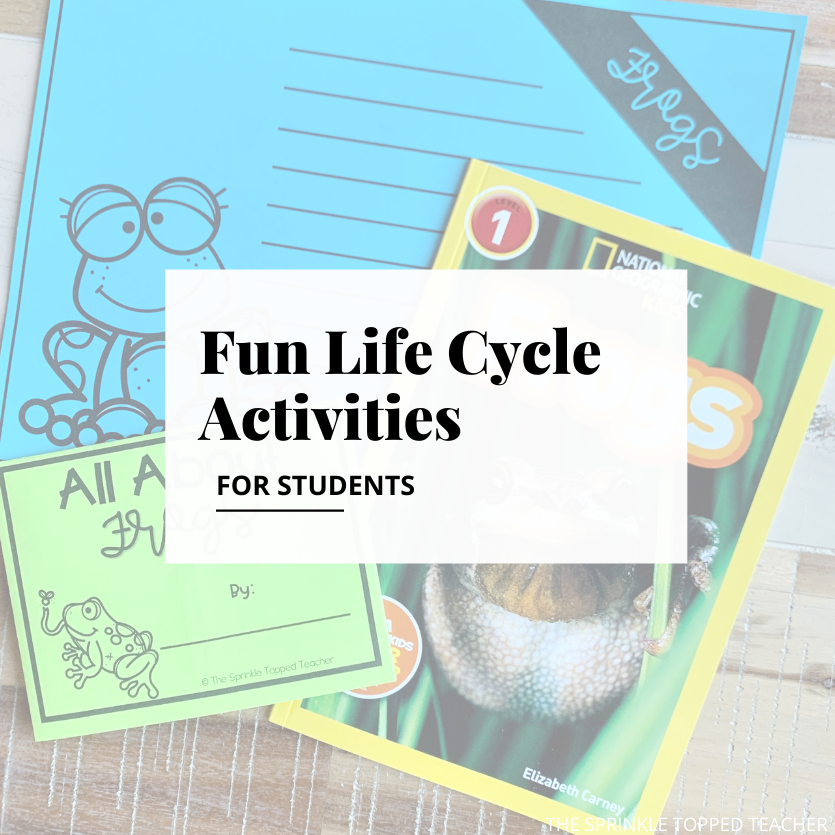
Fun Life Cycle Activities
Teaching all about life cycles is an important concept that students learn at a young age. There are a ton of fantastic resources and life cycle activities out there, it can become overwhelming to know which ones to choose. Personally, I like to use engaging, hands-on activities that will give students a deep understanding of the life cycles of different animals and insects. I also try to choose something that will appeal to all the different types of learners in my class, it isn’t always one size fits all! One of my favorite ways to teach life cycles is using flip flaps or Google Slides if you are distance learning or want to take a more techy approach!
Life Cycle of a Plant Activities
Jump into learning about life cycles by teaching all about plants! This plant’s life cycle flip-flap activity is a fun and engaging way for students to learn. They will create their own little flip-flap packed with knowledge and information on the plant life cycle, such as labeling the different parts of a plant and listing interesting facts! This is a great life cycle activity to do together as a class or to have students work on independently at their desks. Not only will they learn important plant life cycle facts, but they will be practicing other skills like writing, labeling, facts versus opinions, and more! In the springtime, I like to bring in materials for the children to plant their own little seed into a cup and watch the plant life cycle happen right before their eyes! They will love watching that little seed sprout and eventually grow into a plant of their own
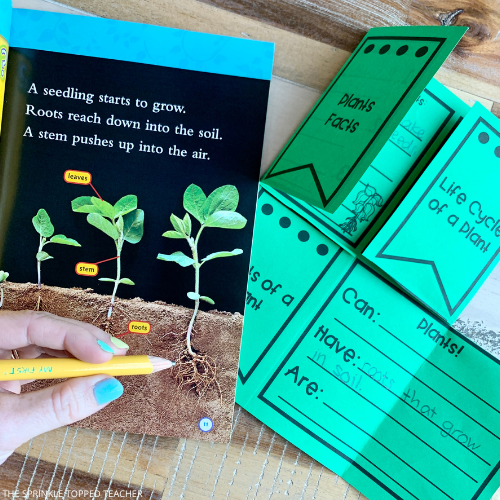
Life Cycle of a Frog Activities
Hop into your spring science unit by teaching about frog life cycles! I will tell you, learning about frogs is one of my student’s very favorite, what’s not to love? Creating a frog life cycle flip-flap is the perfect activity for young students. When I am teaching things like life cycles, repetition is key! Once students start to understand the cycle, it is easy for them to learn about all types of species life cycles. This flip-flap is a fun, hands-on way for students to learn all about frogs! They will label the life cycle of a frog from an egg spawn to a full-grown frog. This flip-flap also includes practice skills like can, have, are labeling, writing sentences, and fact versus opinion. I love these types of activities because they are low prep and can be used in a variety of ways in the classroom!
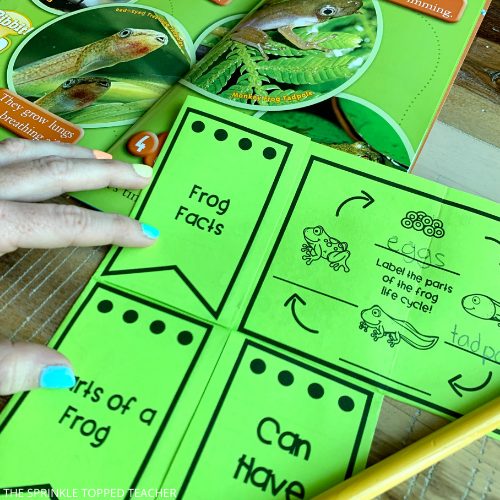
Life Cycle of a Butterfly Activities
The butterfly unit is always one of my class’ favorite science units in the spring because we actually raise caterpillars in our room! By the end of the year, the students are “expert” researchers and I leave these flip flaps out as a center where students use butterfly life cycle books from the library to create their own unique butterfly life cycle flip-flap. I even have some students who prefer to complete the digital version on their laptop which leaves room for student choice. Students will find these activities both fun and engaging and will learn so much about one of their favorite creatures, the butterfly!
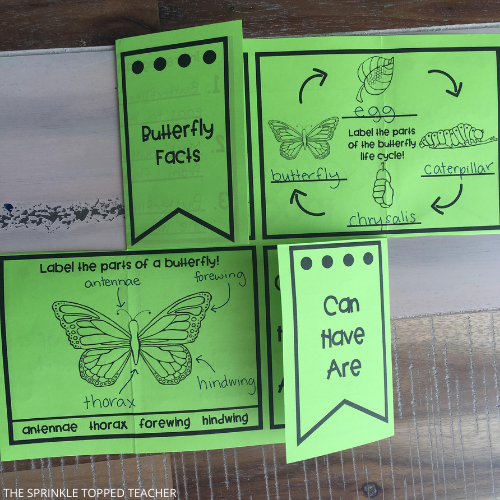
Life Cycle of a Chicken Activities
From an egg to a fuzzy little chick, to a big chicken… students love learning all about chickens because it is an animal they are all very familiar with! I like to kick off our chicken life cycle activities with some fun books about chickens. Students love it and it is a cool way to ease into the fun science behind the life cycles of chickens. After we discuss how the life cycle works, we move on to the hands-on flip-flap activity packed with activities to help students comprehend the cycle.
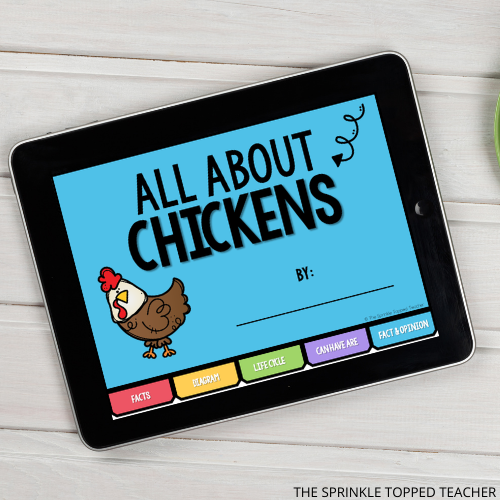
Life Cycle of a Ladybug Activities
During certain times of the year, we can see these little insects climbing around all over the place, and students love it! Before we dive into our ladybug life cycle lessons, I like to take students outside on a ladybug hunt! We head out and look for ladybugs, we study them and try to figure out what stage we think they are in. After this fun adventure outside, it is time to come in and put our research to work! These ladybug flip-flap activities will have students learning and comprehending in no time. With fun, interactive activities like labeling, can, have, are and a bonus writing page students can write their own story or research on!
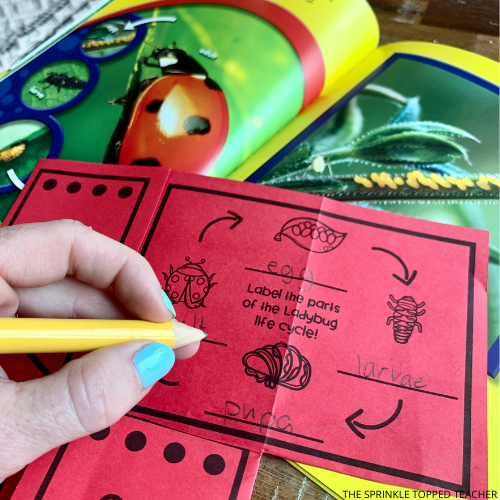
Life Cycle of a Grasshopper Activities
Grasshoppers are crazy-looking creatures that always peak interest in my classroom. That is one reason I like to include them in my life cycles unit! These flip flaps are a great activity for your science unit and can be used as a class project, early finisher project or even as a science center. I love the versatility! I also love how low prep they are, if it saves me time, it is my kind of resource! Students will love jumping in and learning about these crazy creatures and their metamorphosis into those creatures we see bouncing around our yards!
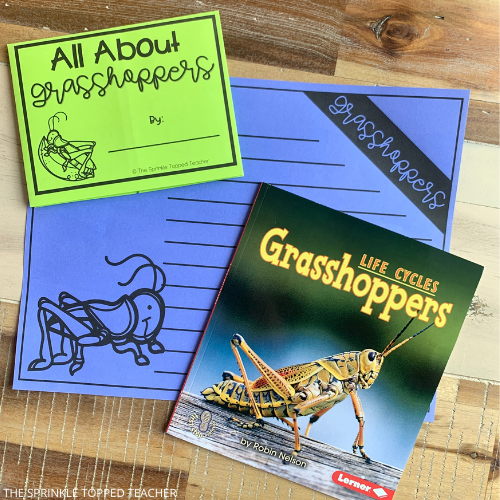
Learning Life Cycles of Different Animals
When teaching about life cycles I like to make sure I give lots of examples of how it all works. There are tons of different species in the world, all with a unique life cycle. Teaching students about different animal life cycles will help broaden their knowledge of the subject and deepen their understanding of how it all works. That is one reason I love this life cycle activity bundle! We focus on a large array of animals, insects, and even plants! Students not only learn about the life cycle of a chicken, grasshopper, ladybug, and frog..but they will be able to learn about the differences between each species as well. Students will also get to learn in a variety of ways with activities like facts and opinion, writing papers, and Google Slides options! Grab up this resource and get your class learning all about life cycles in a fun, engaging way!
All About Life Cycles
Learning about life cycles in elementary school is kind of a big deal! Choosing life cycle activities that are interactive and engaging is key! This will allow students to get creative, use multiple skills and become acquainted with this new concept. No matter what activities you choose, be purposeful, maximize your time and try to appeal to all the different types of learners in your class. That is why I love this resource so much, it is simple but effective and bonus points, your students will LOVE it!